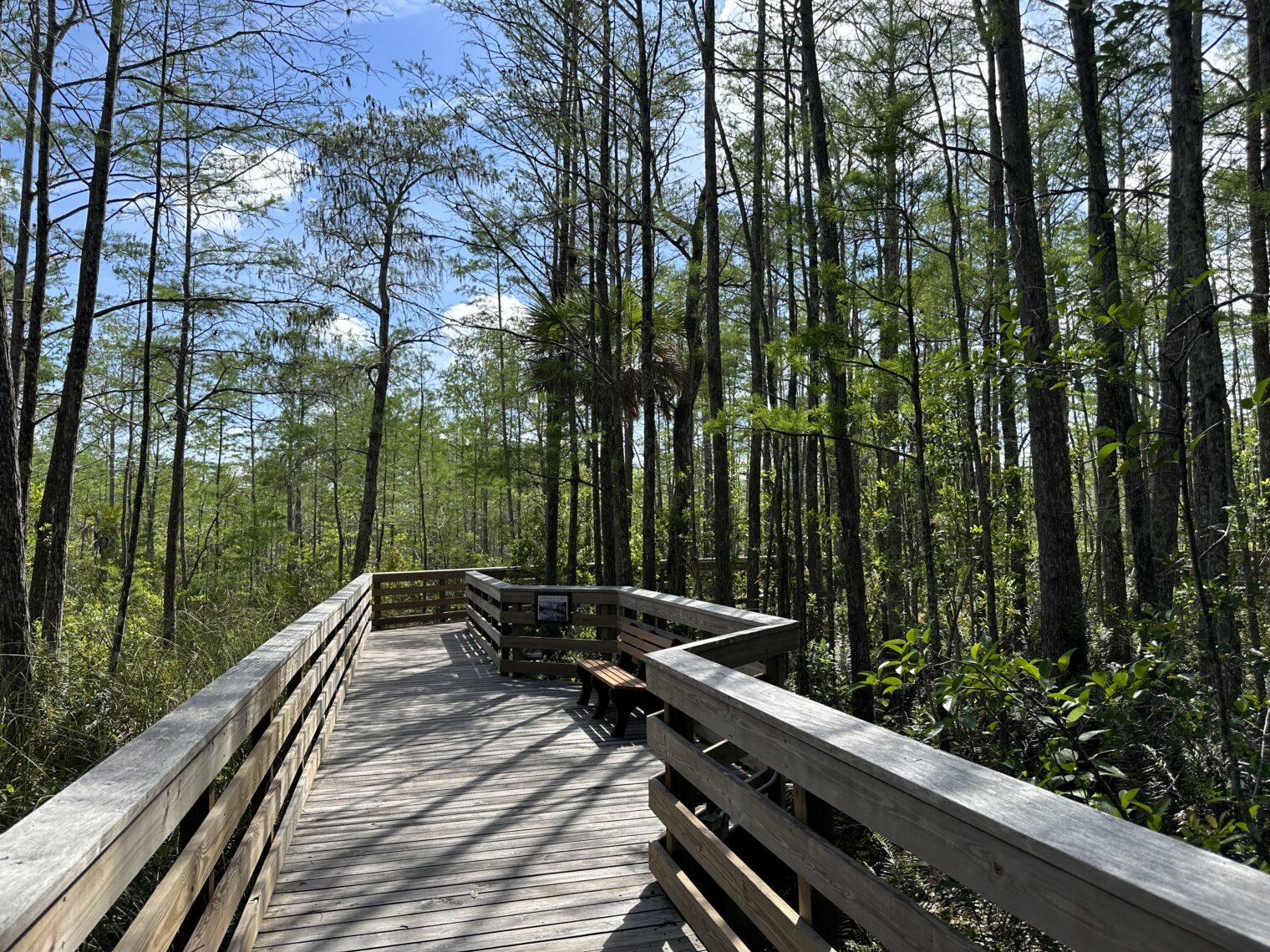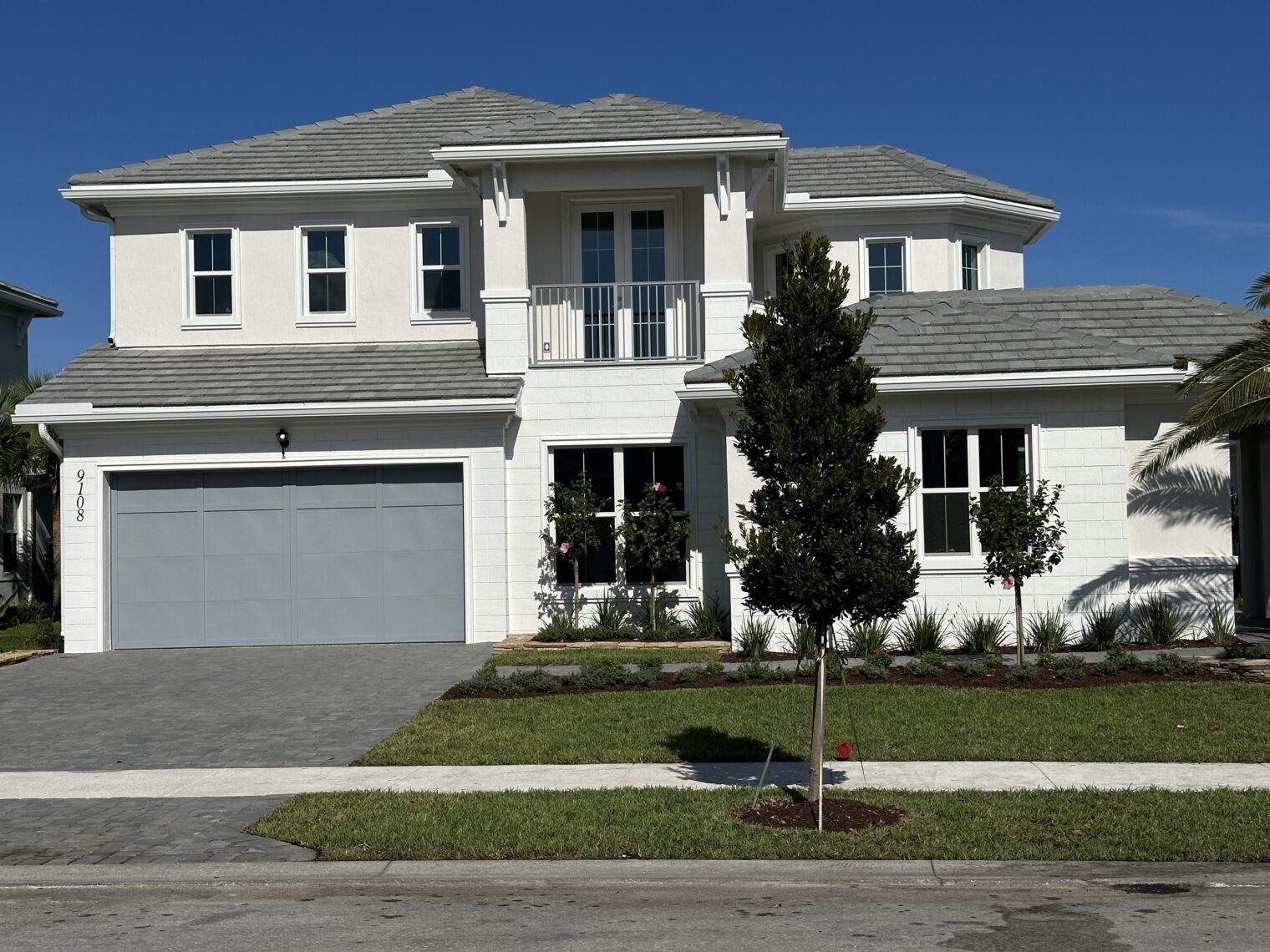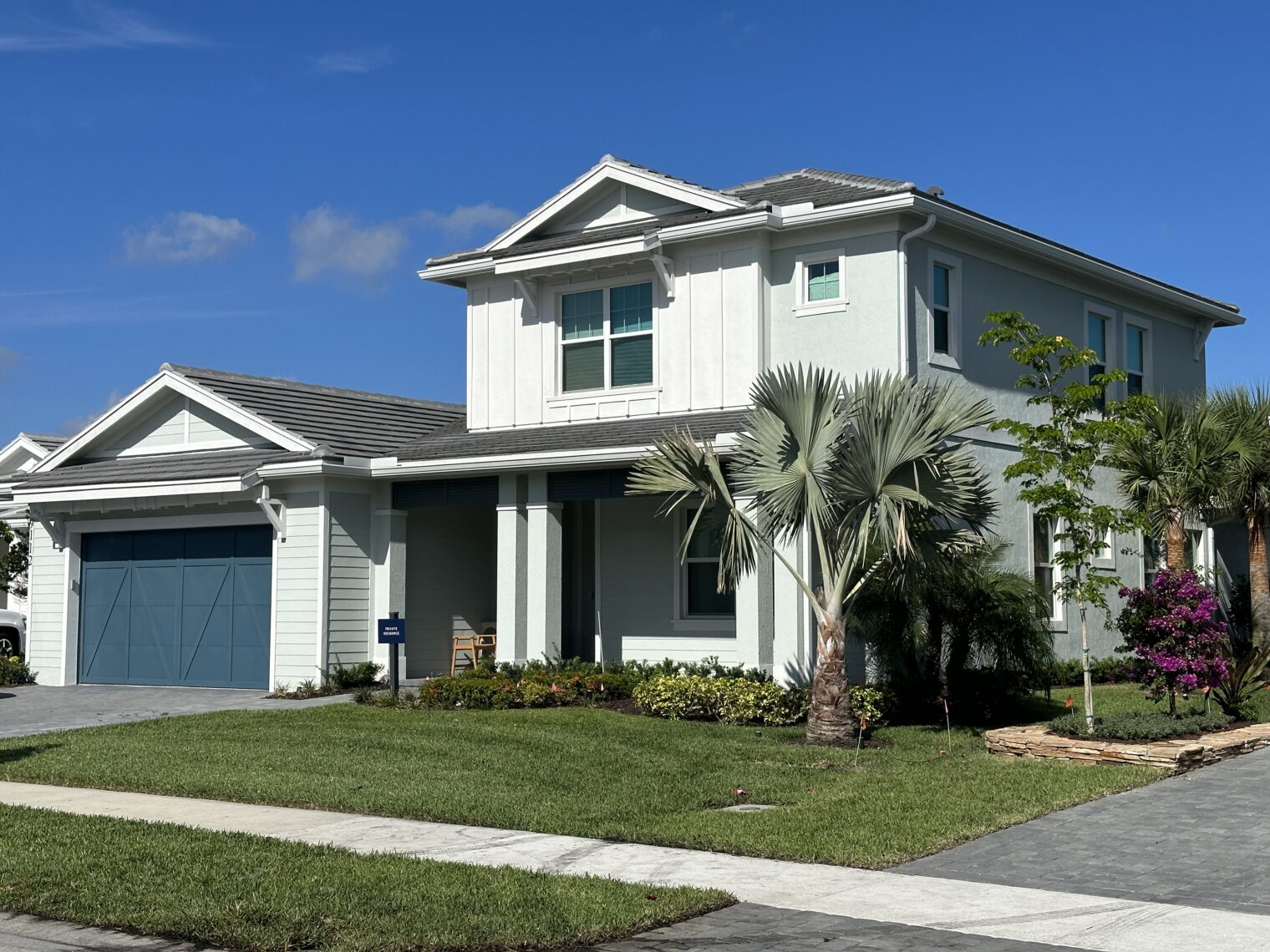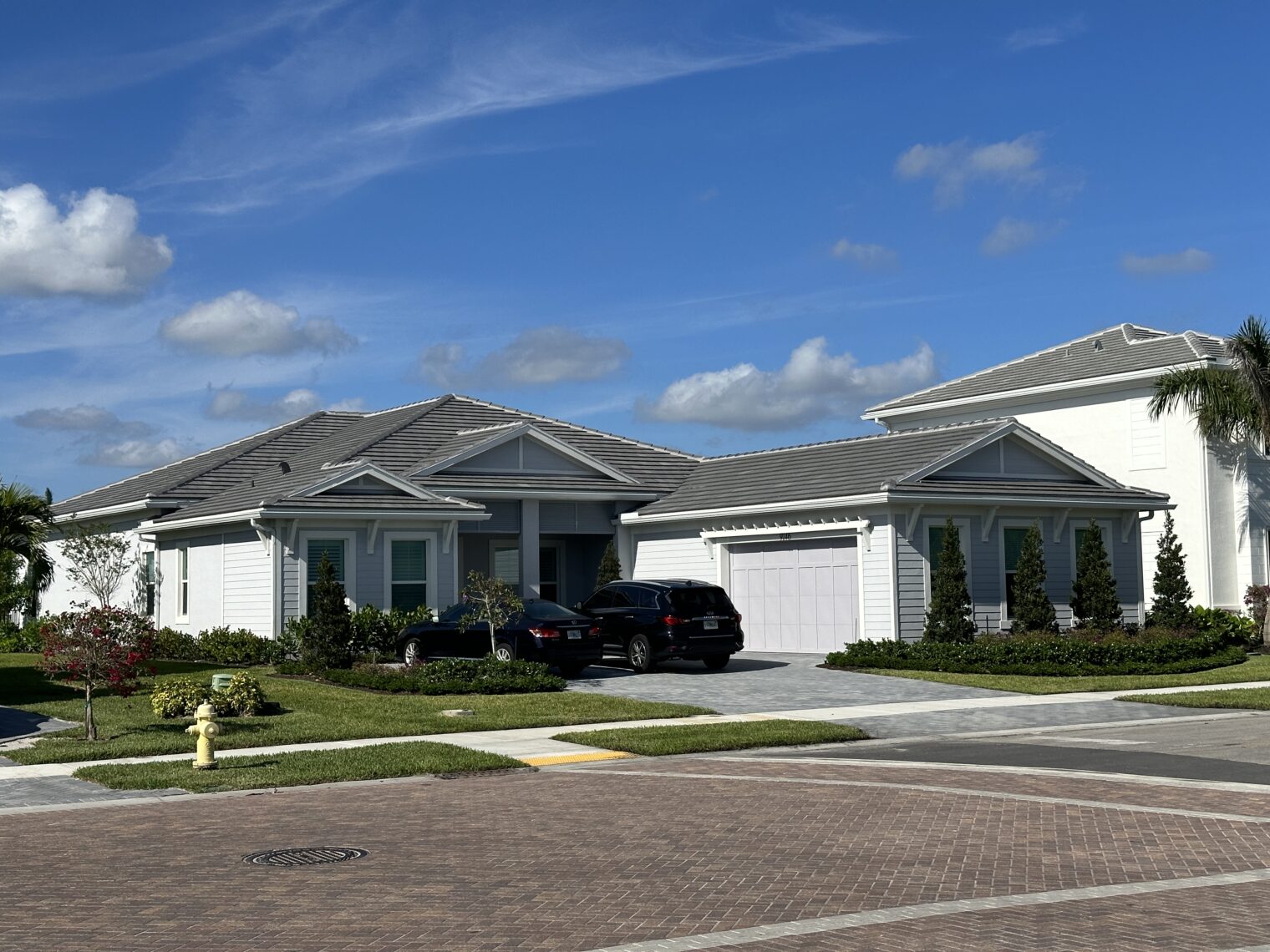As the U.S. population grows (Pew forecast), let’s consider what kind of residential environment will be enjoyed by the country of 450+ million…
We live in Abacoa, a New Urbanism community developed 25 years ago by the MacArthur Foundation, which didn’t need to make the last nickel off the project. Our development is organized into neighborhoods, each with 130-300 households, a small enough group that people can reasonably get to know each other (see Dunbar’s number). Each neighborhood has its own common facilities, such as a clubhouse/gym, a pool, a playground, and a green field. Neither the neighborhoods nor the development are gated, so everything is integrated and you can walk around without looking at high walls. There is a walkable town center, which is pleasant but denies retailers access to the traffic from a major road. We’re home to a university, a neuroscience lab from Germany, and a biology research lab. For aesthetics, the houses usually have their garages in the back and cars go in and out via alleys. Abacoa has been successful and, we’re told (at least by realtors!), that people pay a premium to live here. Even people who don’t live in this part of town say “I love Abacoa”.
If this style of development makes humans happy and motivates humans to pay a premium, you’d think that it would be commercially successful and copies would be sprouting everywhere. That does not seem to be true, however. Across the main road from Abacoa is a newer community: Alton. Their “town center” is a strip mall on a 50-mph 6-lane road. Their clubhouse/gym/pool is a massive magnificent facility serving the entire development (vastly larger than Dunbar’s number). The houses themselves are crammed together more closely than in Abacoa and often “meet the street” with a garage door.
Some of the same builders involved in Abacoa have turned their attention to some former swampland that will soon support 4,000 houses: Avenir. It seems safe to assume that the developers want to maximize their profits. What’s profitable? A rejection of much of New Urbanism and what makes Abacoa Great:
- each neighborhood is gated (many walls!)
- there is a massive central gym/pool to serve a huge number of households
- the town center is a strip mall on a busy road
- driveways and garages are in front of the houses (saves the cost of building alleys)
- no townhouses and apartments, just single-family homes
I visited on April 7. It’s across the street from and actually farther from “civilization” than the Grassy Waters Preserve:


Here are some houses built by Pulte Homes that meet the street with a driveway/garage:




I will give Pulte Homes credit for a nice outdoor kitchen. I want this one:
While I can see that the massive central gym and pool would appeal to people coming to look at buying a house (only after they move in will they realize that it would have been nicer to have smaller neighborhood-based amenities), I don’t understand why the other things that make New Urbanism communities so pleasant and desirable aren’t profitable. I thought that we had learned our lesson about the dangers of conventional 1970s suburban development leading to loneliness and insanity.

Even people who don’t live in this part of town say “I love Abacoa”. Funny thing is out here in California we have never heard someone say this not have we seen any bumper stickers. I have seen plenty of Friends of Jupiter Beach stickers!
Philip should run for mayor and conclude each speech with a rousing refrain of “I love albacore! I love Alcoa! I love Abacoa!”
Based on lion experience with Fl*rida critters, an outdoor kitchen would be pretty scary. Based on the growing community facilities, home owning is becoming more like renting with a very large deposit.
I have noticed lots of backyards in Florida are entirely screened in to protect them against critters and [Bowdlerized to prevent Google deplatforming]. Not sure if that’s the case here.
TS: The big screen structures over pools are rare in Abacoa. Palm Beach County does a great job attacking bugs from the air, I think. We were far more bothered by mosquitoes in the desert of Moab, Utah than we are here in Abacoa.
See https://moabmad.org/ for how “An invasive mosquito has been found in Moab” that is ruining life for the natives. Just keep in mind that every human migrant makes life better for natives and can never be characterized as “invasive”.
Thankfully I got to read the unexpurgated version of Toucan before it was “bowdlerized” — a new word for me. Don’t think the b should be capitalized though since bowdlerized seems to be a verb — notwithstanding that it is derived from a proper noun. Kind of like the common verb “to be munsoned” notwithstanding that that verb, a phrasal verb i think you call it, is derived from the proper noun “Roy Munson.”
JDC I am very grateful you caught a very brief moment of free speech here. Too bad our host is more concerned about having a google platform (whatever that is) than having uncensored conversations. The good news is while his comment moderation policies are ever evolving so am I. I will continue trying to sneak forbidden words, like of course [n****], into the comment section. Most recently he has used software that prevents me from using this forbidden word even if just one letter is Bowdlerized. Now I must enter additional letters to fool the AI. Interestingly our host is perfectly fine with the word “fag”. If only he could provide us with a list of forbidden words we all could try to outsmart his AI!
TS: What’s a “google platform”? A site that is indexed by Google. If you keep adding forbidden words to this web site via comments Google will remove the site from its index, I’m pretty sure. Heretics are free to publish on the web, but Google is not required to include sites that contain what they consider hate speech, vaccine misinformation, mask skepticism, etc. So you’d eventually ensure that nobody can find this site anymore.
@philg, it looks like a strategy to keep some credible thoughts that pop-up here from time to time from the huddled masses
I have bookmarked this site and I hope others have as well! Obama always said… if you don’t want to use google you don’t have to keep using google.
There are some human habitat preferences that we share with other primates, water views, fruit trees, and open spaces (you have to watch out for predators!). However, our complicated social structures create some new more “sophisticated” desires. We value education, we want to live in places with good schools, we value safety, we value the proximity of people who share our basic values. We also have other tastes that are perhaps more difficult to explain (displaying eagles and lions at a residences’ gates for example).
I think city living will always be superior to suburban living. The Ancient Romans agreed with me, a sentiment that is reflected in the etymology of our vocabulary (citizen, civilization, civility… villain, peasant…). In a pleasant city, however large we can always find our set of people who are our “Dunbar number” (by the way, thanks for the information, I did not know about that concept).
American suburban living is never going to be completely successful because, unlike European small towns, most American suburban communities are not organically grown. You can build homes, not communities.
“preferences that we share with other primates” Do you mean sreggin (please read backwards)
Maybe people don’t value houses based on what they look like from the street. (A tour of modern residential development wouldn’t do much to convince you otherwise)
I will not that “mature” societies seem to have evolved to a Chinese/roman villa/Spanish/Indian style of house, where there are walls and rooms along the perimeter, and the open space is in courtyards. It’s not clear why this style of development is not allowed anywhere in the US. (Setbacks and other zoning concerns) The few older neighborhoods that are built this way are popular (generally in beach communities or Spanish-influenced places)
A new urbanist might tell you that it’s ugly and bad for walkability, but a lot of city centers in other countries are built this way, and it’s not like rows of McMansions with their setbacks are great to walk by either.
Philg,
A neighborhood with only 150 Dunbar’s is too small to find discrete Tinder flings.
4000 is probably better for the new normal.